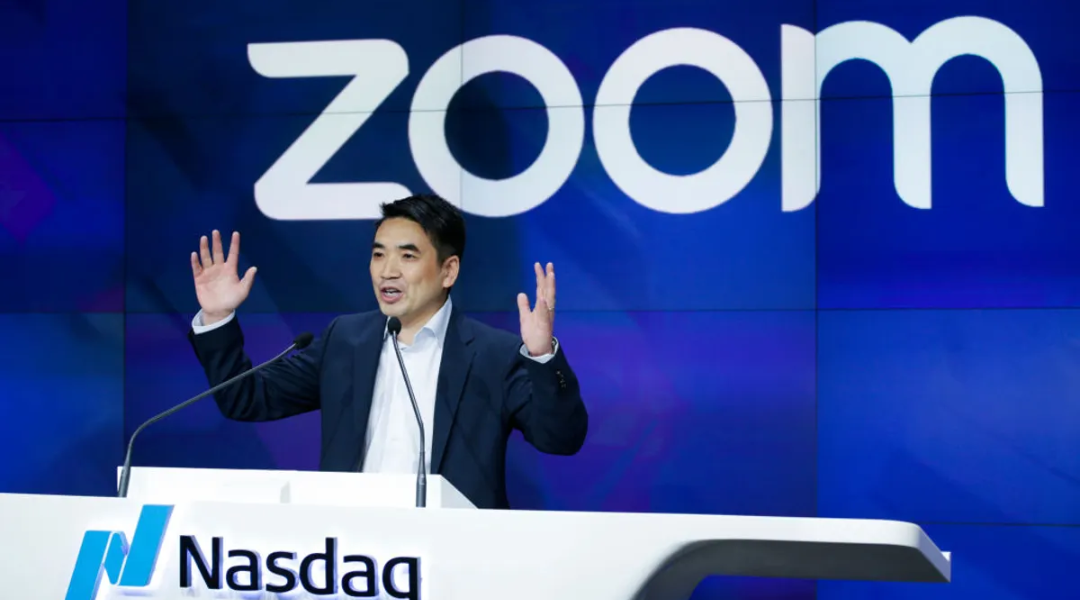

Asana Work Innovation Lab’s 2024 State of Work Innovation report indicates that 21% of employees believe their teams lack effective cross-organizational collaboration.
Meetings are often the automatic choice for coordination, even though they may be the least productive method. Consequently, workdays become filled with meetings that seldom help teams agree or advance projects.
In a move that signals the growing role of AI in corporate communication, Zoom CEO Eric Yuan recently used an AI avatar to deliver his initial remarks during the company’s Q1 2026 earnings call. This wasn’t an isolated incident; Klarna CEO Sebastian Siemiatkowski similarly introduced his company’s financial results using a digital version of himself earlier during the week
These high-profile implementations demonstrate that AI avatars have moved beyond experimental technology to become practical tools for executive communication. When CEOs trust AI avatars to represent them in critical investor communications, it signals a fundamental shift in how we perceive and utilize digital representation technology.
Zoom has been aggressively integrating AI into its platform, positioning itself as an AI-first company and this transformation isn’t sudden. A year ago, speaking on a podcast with The Verge’s Nilay Patel, Yuan articulated his vision: “we can leverage AI more and more. You do not need to spend so much time [in meetings]. You do not have to have five or six Zoom calls every day. You can leverage the AI to do that.”
This idea directly addresses the meeting fatigue that plagues modern workplaces, offering AI as a solution to reduce unnecessary face-to-face interactions while maintaining effective communication.
Beyond avatars, the company’s AI Companion tool is gaining traction, with enterprise clients like Raymond James rolling out AI-generated meeting summaries firm-wide.
Yuan highlighted that AI Companion is evolving beyond simple meeting recaps, it now helps users answer questions, schedule meetings, search information, and build content.
Zoom has made the custom avatar add-on feature available to all users through out this week.
This Custom AI Companion would empower users to create highly sophisticated digital representations of themselves that go far beyond simple video recordings or static images. These avatars combine lifelike facial expressions that mirror natural human emotion and engagement, synchronized voice replication that captures the nuances of individual speech patterns, and scalable production capabilities that enable widespread deployment across multiple platforms and use cases.
The result is a digital companion that doesn’t just look like you it communicates with your authentic presence, mannerisms, and vocal characteristics.
One of the most compelling aspects of custom avatars is their ability to solve a fundamental challenge in modern business communication: the impossibility of being everywhere at once.
Whether you’re a CEO who needs to deliver consistent messaging to global teams, an educator creating personalized learning experiences, or a sales professional maintaining relationships across multiple time zones, custom avatars enables users to extend their personal reach without sacrificing authenticity. Users can leverage their personal avatar to present on their behalf in recorded clips, ensuring that important messages maintain the personal touch that builds trust and engagement, even when delivered asynchronously.
The process of creating a custom avatar has been designed with user accessibility in mind.
Like how mentioned ma year ago, Zoom has restructured, investing heavily in GPUs, AI engineers, and R&D while maintaining profitability. Yuan sees this as necessary evolution.
Current AI makes mistakes, it hallucinates but he believes this will be solved “down the stack” by chip makers and AI researchers.
The technology will move beyond voice to immersive experiences where you can shake hands and feel presence, powered by custom LLMs that truly understand and represent each individual. Advanced security measures like post-quantum encryption and deepfake detection will ensure digital twins are authenticated and secure.
Eric Yuan’s ambitious vision of AI handling our mundane work tasks is moving from concept to reality. At Google I/O 2025, Zoom announced its integration with Google Cloud Agentspace, bringing automated meeting scheduling to millions of users this summer.
This collaboration signifies a major advancement in enabling multi-agent AI collaboration within enterprise workflows.
When someone mentions wanting to meet someone in Gmail, the system will identify the context, check everyone’s calendars, find an optimal time, schedule the Zoom meeting, send invites, and even start the session when the time comes. The back-and-forth emails disappear entirely.
This perfectly matches what Yuan described in his interview with Verge about hating his packed calendar and wishing AI could simplify scheduling. He specifically mentioned how scheduling meetings isn’t just “30 seconds of work” but requires coordinating many moving pieces. This integration solves exactly that problem.
Instead of humans negotiating meeting times, AI agents work together seamlessly, understanding context and making decisions on behalf of their users.
The strategy is clear: start small, build trust, then gradually expand what AI can do on our behalf. If this integration works well, users will be more open to letting AI summarize their meetings, manage their emails, and eventually perhaps even send digital versions of themselves to routine calls.
📣 Want to advertise in AIM Research? Book here >

Cypher 2024
21-22 Nov 2024, Santa Clara Convention Center, CA
A Vendor Briefing is a research tool for our industry analysts, and an opportunity for a vendor to present its products, services and business strategies to analysts who cover the vendor specifically or a related technology or market.
AIM Research encourages technology vendors and agencies to brief our team for PeMa Quadrants, when introducing a new product, changing a business model, or forming a partnership, merger, or acquisition.


